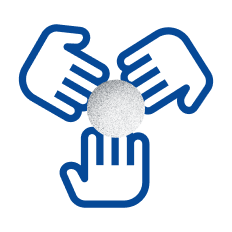Measuring Medical Affairs Impact
Empowering Medical Affairs to Measure the value of their activities.
Medical Affairs play a strategic role in educating HCPs on scientific topics, care pathways and patient outcomes. Their ability to measure the impact of their activities has grown increasingly important. H1 can help Medical Affairs teams understand and track their influence in closing care gaps, driving evidence-based medicine and improving patient outcomes.
Identify, engage, and educate the right KOLs on your journey to drive adherence to evidence-based medicine.
In this day and age, it has become paramount for Med Affairs teams to connect with the correct HCPs and HCOs. MSLs are required to step in and provide much-needed education concerning clinical pathways and emerging medicine. This subsequently leads to an ever-expanding map of KOLs that is changing at a rapid rate. In order for Medical Affair teams to be successful, they need comprehensive tactics that incorporate both physical contact as well as digital mediums in order to effectively reach their desired audience.
Measuring the impact of Medical Affairs
The medical affairs division of a pharmaceutical firm is the driving force behind successfully launching a new drug. This group leads educational outreach to doctors, and captures data about potential treatments for unmet needs. In this role, medical science liaisons (MSLs) act as the public face of the company – keeping health professionals informed on emerging trends and therapies, as well as communicating with their employer to shape strategies that will help guide successful clinical trials.
Careful consideration in measuring results of Medical Affairs activities goes into fine-tuning their approaches so they can produce maximum results and take efficiency up another notch. Combining both qualitative and quantitative metrics provides them with everything they need to tell a great value story.
Identify, engage, educate and empower.
Data and science are revolutionizing the pharmaceutical foundations for both practitioners and patients, with innovation completely shifting the healthcare atmosphere. Medical Affairs has become increasingly important in light of the heightened focus on offering value-driven medical education.
Medical Affairs teams are vital to translating clinical research into actionable solutions for a variety of health care providers, partnering with respected authorities and subject matter experts to deliver meaningful learning experiences. Still, simply delivering education is not sufficient; tracking how that information is transferred and applied is essential for measuring impact and creating opportunities for ongoing development of instructional material and methods.

With H1 you can:
Find clinical care gaps among HCOs and HCPs.
Find people who can drive a change to fill the gaps.
Arm medical affairs with AI-driven personalized insights to educate the people that can drive the change.
Complement your omni-channel strategy to not only educate the KOLs and Digital Influences, but expand your reach to a mass with digital channel.
Measure both leading and lagging indicators of clinical behavior to ensure that your efforts are delivering results, and use the learning to share your strategy.
How Medical Affairs Teams Benefit from H1 for Improving Adherence to Evidence-based Medicine
Identifying Where Education and Care Gaps Exist
Identifying Where Education and Care Gaps Exist
Leverage clinical data to identify clinical gaps in care.
Effectively Engaging KOLs
Effectively Engaging KOLs
Build a blueprint of how to engage with them based on their center of influences and your MSL territories.
Empowering Field Teams
Empowering Field Teams
Arm field MSLs with personalized insights about these influencers based on both the external and internal data.


